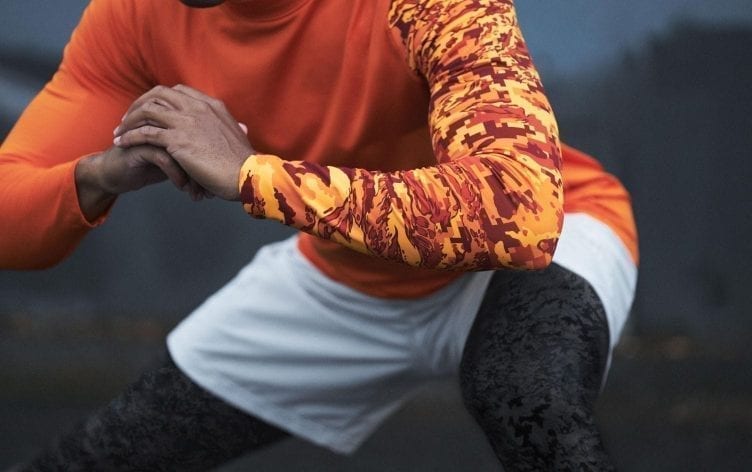
The knee joint is generally stable, but feeling pain in that area can be frustrating and scary. However, you don’t always need to run to a doctor when your knee bothers you. Sometimes, you can work around the pain and continue getting stronger and fitter.
WHEN TO SEE A DOCTOR (OR NOT)
Dr. James Gladstone, chief of sports medicine at Mount Sinai Hospital in New York, says you should see a doctor if you feel a “pop” or tear in your knee. Another scenario that should send you to the doctor is if you bang your knee or experience a traumatic event, such as a skiing or biking accident. These traumatic injuries will likely cause swelling in the knee, accompanied by pain and heat in the area.
There’s another classification of injuries, however, called overuse injuries. Overuse injuries, such as patellar tendinitis, develop over time, according to Dr. Gladstone. However, you don’t need to see a doc right away if the pain is bearable. He recommends rest, ice, stretching and ibuprofen for 7–10 days. If your pain doesn’t subside by then, contact a doctor.
WORKING AROUND THE PAIN
You should take your knee pain seriously and consider changing your workouts. Dr. Gladstone recommends avoiding anything that causes pain, but he also says that it’s important to keep moving. If running hurts your knees, replace it with swimming. If tennis is the source of your pain, try cycling.
For weight training, Dr. Gladstone recommends avoiding squats and lunges if you have pain in the front of your knees (anterior knee pain). That’s because these movements put pressure on the front of your knee joint and work the quad muscle group, which are the big muscles that run down the front of your thigh.
1
STRETCHING AND ROLLING
Stretching is an important part of the recovery process. Dr. Gladstone explains that tight hamstrings (the muscles that run down the back of your thigh), pull on the knee joint. If they’re too tight you can get pes tendonitis (tendonitis of the hamstring tendons) or pain in the front of your knee. A hamstring stretch, such as a standing or seated toe stretch, should be part of your routine. You can do it either before you exercise or after your workout.
Dr. James Robinson, primary sports medicine physician at the Hospital for Special Surgery, looks at the whole body instead of one part. Instead of just looking at what’s going on at the knee, he assesses other joints like the hip and knee.
If your hips are tight, it could be causing your knee pain, and you should focus on stretching your hips. If your lower back or ankles are tight, you should stretch those. A physical therapist can help you figure out what stretches are appropriate.
2
CROSS-TRAINING
Pay attention to when your knee hurts. Any activity that makes the pain worse should be avoided until your injury is under control. If running hurts, switch to a different activity. If your weight training routine is painful, try something else.
High-impact exercises like running and jumping may exacerbate knee pain. Try to eliminate these exercises first and switch to low-impact exercises, according to an article from Penn Medicine. Then, you can begin focusing on exercises that strengthen the muscles around your knees. Muscle groups like the quadriceps, hamstrings, glutes and hip muscles should be strengthened.
Swimming and cycling are two of the best low-impact exercises, according to Dr. Robinson. Cycling can be done either on a stationary bike or out on the road if you want some fresh air. It’s a particularly useful activity for knee rehab because it’s not weight bearing but you still work the leg muscles.
While swimming isn’t weight bearing, it’s not as tough on the leg muscles as cycling, which means you won’t make your legs much stronger. If you decide to start cycling, make sure you properly adjust your seat before starting. Your knees shouldn’t come up close to your chest as you pedal. If they do, it can be worse for your knee pain.
3
WEIGHT TRAINING
As noted above, if you have pain in the front of the knee, it’s best to avoid squats and lunges, according to Dr. Robinson. You can also cut the movement short. Instead of going all the way down just go half way and see if it still bothers your knee.
Your technique during squats, lunges and most lower-body exercises could cause or exacerbate knee pain. A simple tip to alleviate your pain is to shift your weight back from your toes toward your heels as you do lower-body workouts.
An October 2018 study published in the Journal of Biomechanics found that when weight is shifted forward toward the toes, it increases pressure on the knees. When your weight is in your heels, it decreases pressure and could prevent further damage to the knees.
Squats, deadlifts and even lunges can be performed with your weight in your heels. For squats and deadlifts, pick your toes up slightly off the ground when you go down, and press into your heels as you stand up. For lunges, all the weight in your front leg should be in the heel of the front foot, not the toes.
If you have pain in the back of the knee, avoid hamstring-heavy exercises like deadlifts and single-leg deadlifts. These work the muscles in the back of your leg, which can pull on the sensitive areas.
THE BOTTOM LINE
For every pound you weigh, four pounds goes through your knee every time you step, notes Dr. Robinson. Keeping a healthy weight is crucial for knee recovery. Staying active is an important part of knee rehab because it helps you keep off unnecessary weight. You can also look into changing your footwear if you feel like it might be causing problems.
Dr. Gladstone recommends that you don’t go it alone. Instead, seek out a footwear specialist at a running store or a podiatrist who works with athletes. They can help you navigate the crowded and often confusing world of athletic footwear to make sure you have the right equipment on your feet.
Check out “Workout Routines” in the MyFitnessPal app to discover and log workouts or build your own with exercises that fit your goals.



